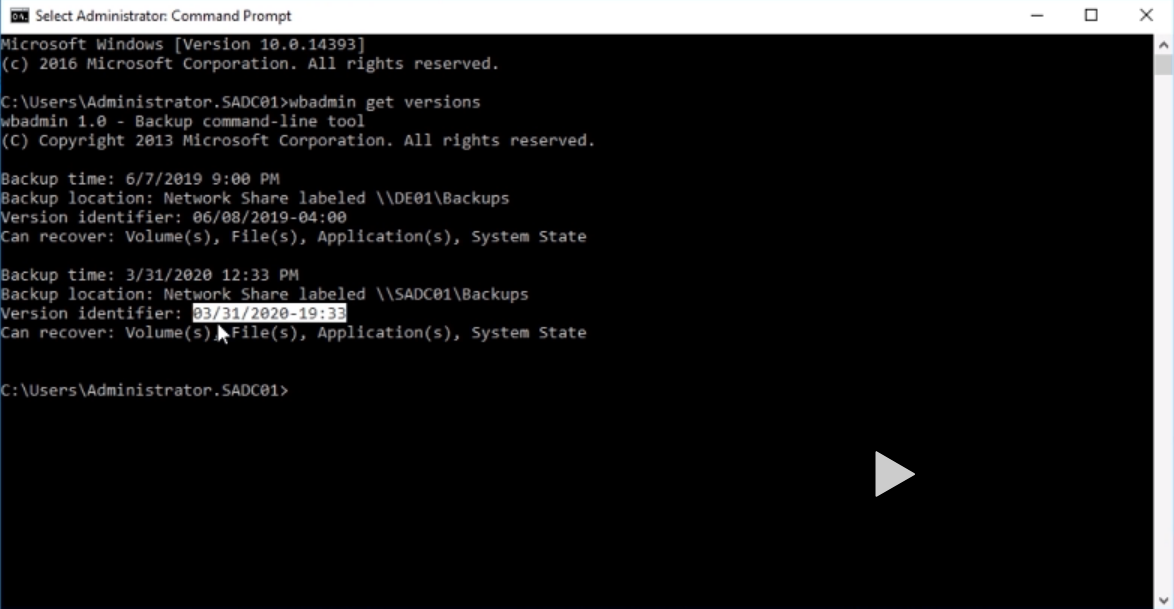< 8 How to use Powershell with Active Directory | Home | 10 Conclusion >
42: Creating an Active Directory System State Backup
https://www.udemy.com/course/active-directory-group-policy-2012/learn/lecture/19369012#content
Configuring Windows Backups
- Server Manager > Windows Server Backup
- If missing, install via Server Manager > Manage > Add Roles and features
- This should have a dedicated drive / Network share
- I created a C:\shares\Backups shared folder via Server Manager
- Local Backup [RtClk] > Backup (once/schedule) > Backup Options (*)Different options > [Next >]
- (*) Custom > [Next >]
- Select Items for Backup > [Add Items] > System state > [OK]
- [Next >]
- Specify Destination Type (*)Remote shared folder [Next >]
- Location:
- Use the Network path to the folder you created. \\SERVER\path
- (*) Inherit
- [Next >]
- [Backup]
- View Backups
- Navigate to the folder [RtClk] > Properties
43: Restoring an Active Director Backup
https://www.udemy.com/course/active-directory-group-policy-2012/learn/lecture/19369016#content
- 1. Reboot server into Directory Services Repair Mode (DSRM)
- Reboot the server and keep hitting [F8] until boot screen
- Scroll to ‘Directory Services Repair Mode”
- 2. Start > “System configuration” > Boot
- [x] Safe Boot
- ( * ) Active Directory repair
- [OK]
- Once Booted, you will need to use the Local Administrator account to log in
- .\administrator
- CMD > wbadmin get versions
- Get the version identifier
wbadmin start systemstaterecovery -version:(version id) -authsysvol # wbadmin start systemstaterecovery -version:03/31/2020-19:33 -authsysvol # Confirm all notices
This is expected to take hours and might cause internal network outages due to the amount of traffic.
After reboot, you should be good to go.
